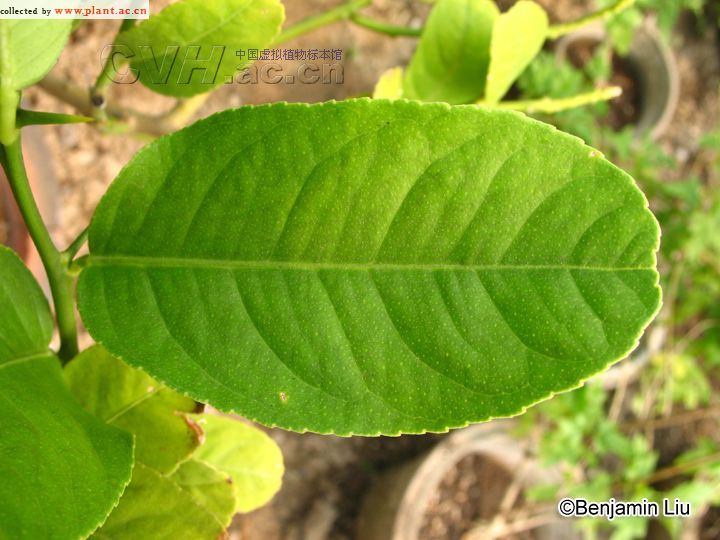
Citrus medica Linn on white background 4184510 Stock Photo at Vecteezy
Citrus medica Linn. belonging to the Rutaceae family, has been used for centuries in medicine for its antioxidant, anti-inflammatory, antimicrobial, antiviral, and antihyperglycemic properties.

National Tropical Botanical Garden Citrus medica Plant Detail Tropical Plants Database
Abstract Bijapura, botanically identified as a Citrus medica Linn. is an important plant of Ayurvedic material medica. Its various parts are widely used to treat many ailments in traditional.

Fruits of Citrus medica Linn. Download Scientific Diagram
Citrus (Citrus medica Linn.) University of California, Davis, One Shields Avenue, Davis, CA 95616 | 530-752-1011. Last update: March 7, 2022. Center for New Crops and Plants Products, Purdue University.

Citrus Medica Linn On White Background Stock Image Image of aurantium, closeup 58593401
Citrus medica Linn., also called "cedar", "citron", "etrog", "foshou", and "fingered citron", belonging to the Rutaceae family, is one of the three basic species of the genus Citrus, together with Citrus maxima Burm. (pomelo) and Citrus reticulata Blanco (mandarin). It is a short, medium-sized evergreen tree that reaches 4-8 m in height [].

佛手Citrus medica Linn. var. sarcodactylis (Noot.) Swingle_植物图片库_植物通
The citron ( Citrus medica ), historically cedrate, [4] is a large fragrant citrus fruit with a thick rind. It is said to resemble a 'huge, rough lemon'. [5] It is one of the original citrus fruits from which all other citrus types developed through natural hybrid speciation or artificial hybridization. [6]

Citrus medica Linn laying on wheat straw. Asian tropical fruit. Stock Photo Adobe Stock
This study was designed to investigate the effects of five Rutaceae family ethanol extracts (FRFEE): Citrus medica Linn (CML), Citrus aurantium L. Cv. Daidai (CAD), Citrus medica Linn. var. sarcodactylis (Noot.) Swingle (CMS),Citrus sinensis L. Osbeck (CSO) and Zanthoxylum bungeanum Maxim (ZBM) on r.

Citron (Citrus medica) Plants Candide Gardening
We report an eco-friendly method for the synthesis of copper nanoparticles (CuNPs) using Citron juice (Citrus medica Linn.), which is nontoxic and cheap. The biogenic copper nanoparticles were characterized by UV-Vis spectrophotometer showing a typical resonance (SPR) at about 631 nm which is specif.

Linnean herbarium (SLINN), Citrus medica L.
The Citrus medica Linn. extract and Glibenclamide were administered orally as a suspension in 1% v/v tween 80. While animals of group II were received only 1% v/v of tween 80. Collection of blood and estimation of biochemical parameters Blood was withdrawn from the retroorbital sinus under ether inhalation anesthesia. The fasting blood glucose.

Scientific Name Citrus aurantium Linn, Sour Orange, Idlimbu Stock Photo 61448121 Alamy
Citron Fruit: Citrus medica Uses, Dose, Research, Side Effects Citron fruit looks like a big lemon, with very thick skin with very less inner pulp content. Its fruit peel, seed, pulp etc are used in Ayurvedic treatment. It is widely used for treating abdominal colic, digestive disorders, piles etc. Table of Contents Unripe fruit uses

(Galgal) Citrus medica Linn 5. Cordia diacotoma G. Forst. Local Name... Download Scientific
Citrus medica Linn. belongs to family Rutaceae and known as citron or bara nimbu. Almost all parts of this plant are having ethno medicinal uses; one of them is analgesic effect of its fruit decoction. The present study aims at evaluation of analgesic effect of fresh decoction of C. medica Linn. fruits. The study was carried out using male albino rats (150-200 g).

Citrus Medica Linn on White Background Stock Photo Image of leaf, eating 76373328
Citrus medica Linn., known as bijapura in Ayurvedic literature, is widely used in traditional system of medicine. Many pharmacological studies have been conducted to investigate the properties of.
TRADITIONAL MEDICINE IN INDIA (PART3)
1. Introduction. Citrus medica Linn., also called "cedar", "citron", "etrog", "foshou", and "fingered citron", belonging to the Rutaceae family, is one of the three basic species of the genus Citrus, together with Citrus maxima Burm. (pomelo) and Citrus reticulata Blanco (mandarin). It is a short, medium-sized evergreen tree that reaches 4-8 m in height [].

A study of In vitro antioxidant and apoptotic effect of citrus medica Linn. leaves (Naarthai
29594287 10.1039/c7fo02035j Citrus medica (Citron) is an underutilized fruit plant having various bioactive components in all parts of the plant. The major bioactive compounds present are iso-limonene, citral, limonene, phenolics, flavonones, vitamin C, pectin, linalool, decanal, and nonanal, accounting for several health benefits.

佛手Citrus medica Linn. var. sarcodactylis (Noot.) Swingle_植物图片库_植物通
Introduction: Antimicrobial activity of fruit juice and ethanolic extracts of root, leaf, bark, peel and pulp of citron (Citrus medica Linn., Rutaceae) was examined against seven bacteria (Bacillus subtilis, Staphylococcus aureus, Enterococcus faecalis, Escherichia coli, Klebsiella pneumoniae, Pseudomonas aeruginosa and Proteus vulgaris), two fungi (Aspergillus flavus and A. niger) and a yeast.

The citron Linn Citrus medica is the fruit of a bush of thorny branches. Its origin is uncertain
Citrus medica Linn., known as bijapura in Ayurvedic literature, is widely used in traditional system of medicine. Many pharmacological studies have been conducted to investigate the properties of.

佛手Citrus medica Linn. var. sarcodactylis (Noot.) Swingle_植物图片库_植物通
Citrus medica Linn. belonging to the Rutaceae family, has been used for centuries in medicine for its antioxidant, anti-inflammatory, antimicrobial, antiviral, and antihyperglycemic properties. These activities are ascribable not only to the presence of health-promoting macronutrients and micronutrients, such as carbohydrates, minerals, amino.